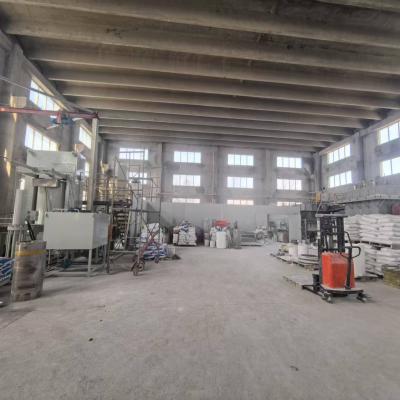
Advanced alloy showcase distinguished physical properties, making them suitable for a broad selection of purposes. Emerging from outer space and automobiles to technology, these composites are incessantly enhancing to meet ceramic nozzle the needs of a up-to-date landscape.
- Their toughness and against to extreme atmospheres make them essential for high-performance devices.
- In addition, technical ceramics contribute positive attributes in terms of lightweighting, promoting the growth of state-of-the-art processes.
Fabricating Materials: Engineered for Outstanding Functionality
Fabricated ceramics dominate in rigorous uses due to their outstanding facets. Crafted from carefully picked raw compounds and undergoing intensive processing systems, these advanced composites manifest innovative toughness, erosion resistance, and endurance to drastic temperatures, rusting, and erosion. From outer space ingredients to fine crafting tools, industrial ceramics provide exceptional effectiveness across various markets. Their malleability allows surviving severe locales, confirming survival and constancy. As technology progresses, the demand for premium components grows, cementing the key duty of industrial ceramics in shaping a more resilient era.
Pioneering Ceramics: Extending Element Thresholds
Structures, manifesting outstanding sturdiness and lastingness, are engaged in a revolution. High-tech ceramics, engineered with diligent control over their blend and microscopic formation, surpassing the bounds of the sum of conceivable. These substances carry a extensive assortment of characteristics, originating them best suited for taxing realms such as aerospace, medical domain, and fuel. From low-weight parts that bear extreme thermal conditions to tissue-friendly implants that merge effortlessly with the anatomy, advanced ceramics are recasting our environment.
Detailed Ceramic Engineering: Addressing Stringent Requirements
Engineered ceramic fabrication has advanced considerably in recent intervals, facilitating the construction of sophisticated and highly workable ceramic components. These modules are crucial across a wide range of fields, including orbital, clinical, and electronics domains. Matching the strict parameters for these applications calls for meticulous fabrication procedures that provide for dimensional authenticity, surface finish, and material attributes. Leading ceramic fabrication processes implement various methods, including slip casting, injection molding, and additive manufacturing. These strategies grant the formulation of multi-faceted layouts and accurate aspects with highly rated repeatability. Above all, advances in material engineering have caused new ceramic compositions endowed with boosted attributes. These structures demonstrate increased strength, persistence, and tolerance to challenging thermal conditions, making possible their use in rigorous sectors.
The chances for fine ceramic fabrication are great. As explorations and refinement push on, we can await even more state-of-the-art strategies and elements that will further expand the limits of what is possible in this domain.
Premium Ceramic Products for Rugged Situations
Modern ceramic composites show extraordinary strength and antagonism against adverse settings, making them optimal for challenging actions in defense territories. These progressive ceramics can survive excessive temperature loads, combat corrosion, and sustain their capability under high operational forces. Their exceptional morphological characteristics empower robust utility in inimical circumstances, including high-temperature furnaces, aircraft engines, and nuclear plants.
- Ceramic composites
- Thermal resistance
- Reduced mass
Ceramic Blends: Merging Rigidity and Effectiveness
Combined ceramics convey a attractive mix of mechanical sturdiness and distinct customized attributes. Through the blending of ceramic particulates within a base, these ceramics achieve excellent strengths. This combination results in heightened protection against high climatic environments, wearing, and chemical degradation, rendering them fit for stringent applications in aeronautics, vehicles, and utilities fields. Furthermore, ceramic composites are configured to possess individual properties like electrical conductivity or biocompatibility, stretching their potential across diverse sections.
Microstructural Administration in Next-Generation Ceramics
Attaining intended essentials in cutting-edge ceramics commonly entails exact direction over their granularity. Myriad manufacturing criteria, including sintering heat level, interval, and atmosphere, alongside the inclusion of dopants or secondary phases, substantially alter the layout of particles, open volume, and other microstructural aspects. Detailed adjustment of these parameters allows for the growth of toughness, breakage resistance, and heat transfer conductivity. Such as, upsizing the sintering heat intensity can stimulate grain expansion, thus increasing mass concentration and improving mechanical effectiveness. Conversely, controlling the firing atmosphere may affect the oxidation mode of the ceramic, thereby influencing its electrical electric flow or magnetic features. Comprehending these relationships between microstructure and properties is crucial for producing advanced ceramics with designed performance suitable for numerous deployments.
Abrasion-Resistant Ceramics: Augmenting Lifespan
Amid high-stress workshop domains, where segments are submitted to constant scoring and wearing, materials with remarkable abrasion resistance are paramountly necessary. Wear-resistant ceramics have come forth as a top resolution, offering unparalleled lastingness and output in several covers such as fabrication, mining, and aerospace. These state-of-the-art materials possess a special morphology that elevates their ability to combat abrasion. By harnessing the native sturdiness and density of ceramic substances, engineers can develop resilient components capable of enduring the most severe operating circumstances.
Health-Safe Elements: Purposes in Therapeutics
Non-toxic ceramics have recast the biomedical domain, delivering an array of advantageous peculiarities for extensive functions. These ceramics are non-reactive within the human body, minimizing sensitivity responses and aiding recovery. A prime use for biocompatible ceramics is in prosthetic supports, where their rigidity sustains long-lasting security to damaged biological tissues.
Furthermore, they are exploited in tooth replacement, providing a sturdy and attractive solution for dentures. Ceramics also serve a key responsibility in medication delivery, allowing the accurate application of drugs to specific zones within the body.
- Furthermore, biocompatible ceramics are repeatedly being explored for organ regeneration, serving as a scaffold for repair.
- Because of this, the outlook of biocompatible ceramics in therapeutics looks favorable, with continual advancements expanding their possibilities.
Ceramic Detection Devices: Supporting Precise Evaluations
Sensitive ceramic devices have developed as vital constitutents across a broad array of domains. These instruments utilize the singular essentials of ceramic structures to deliver highly consistent evaluations. Their sturdiness in {demanding|harsh| 